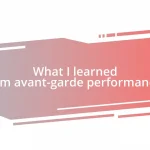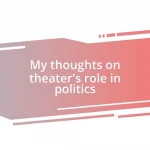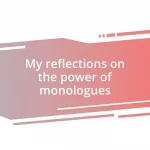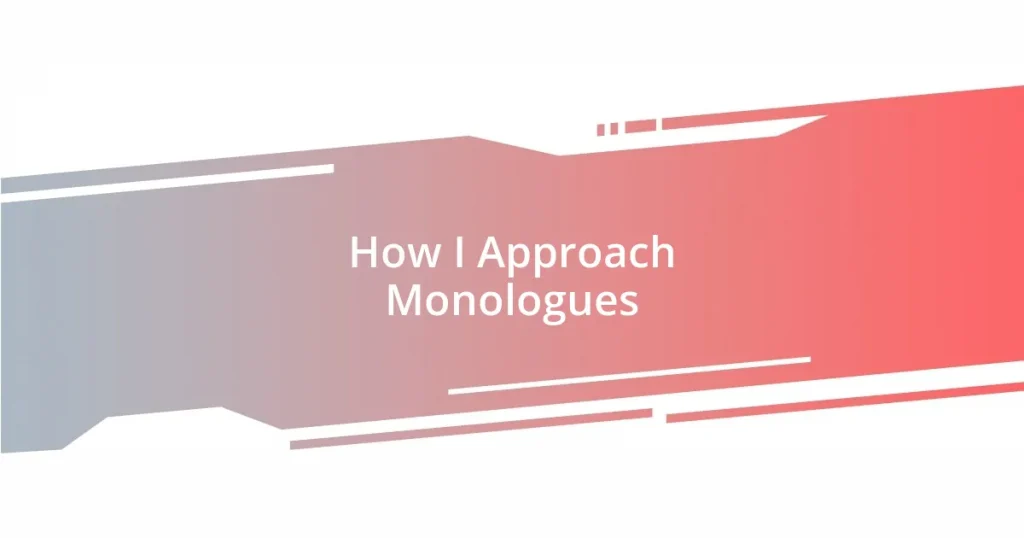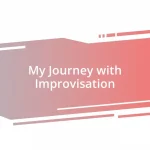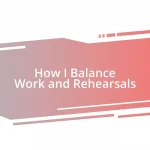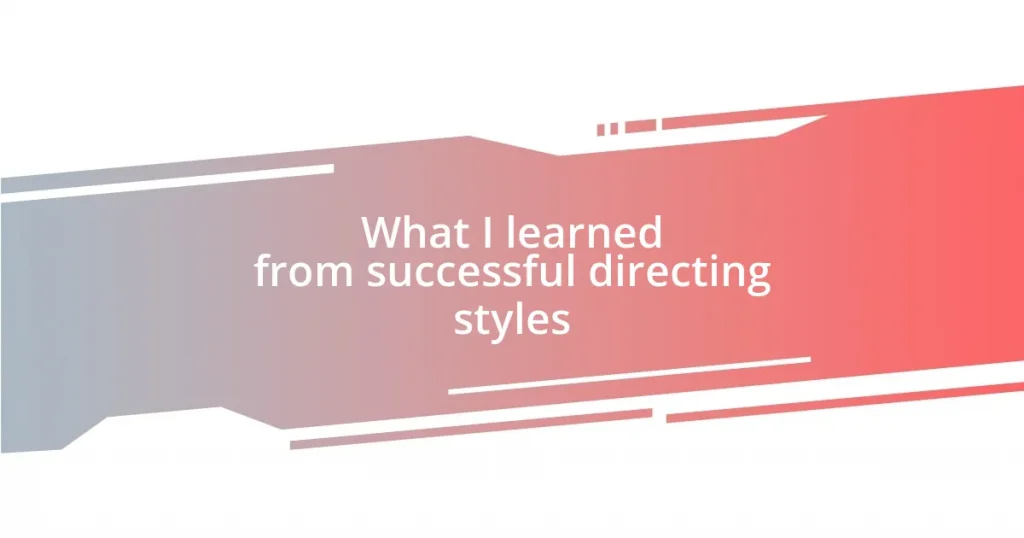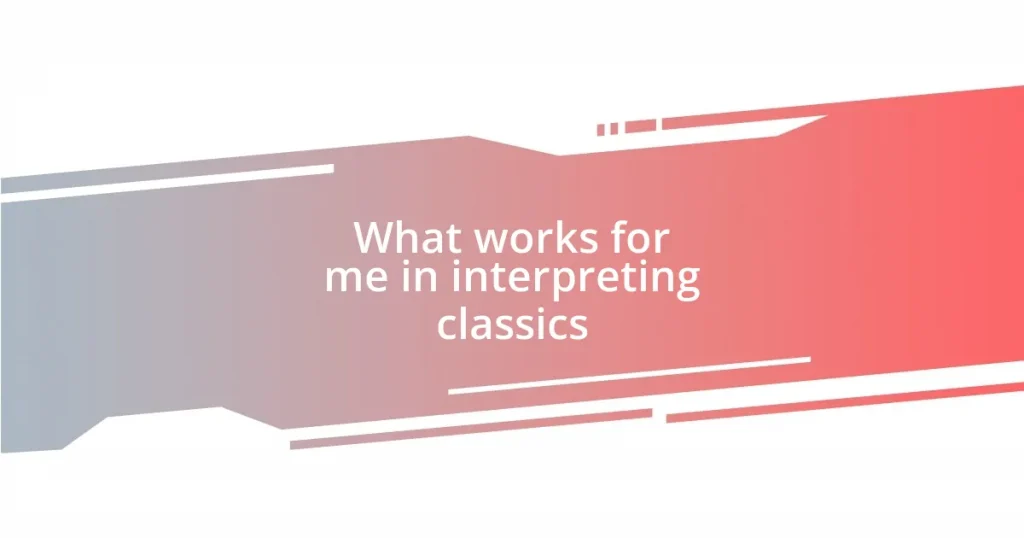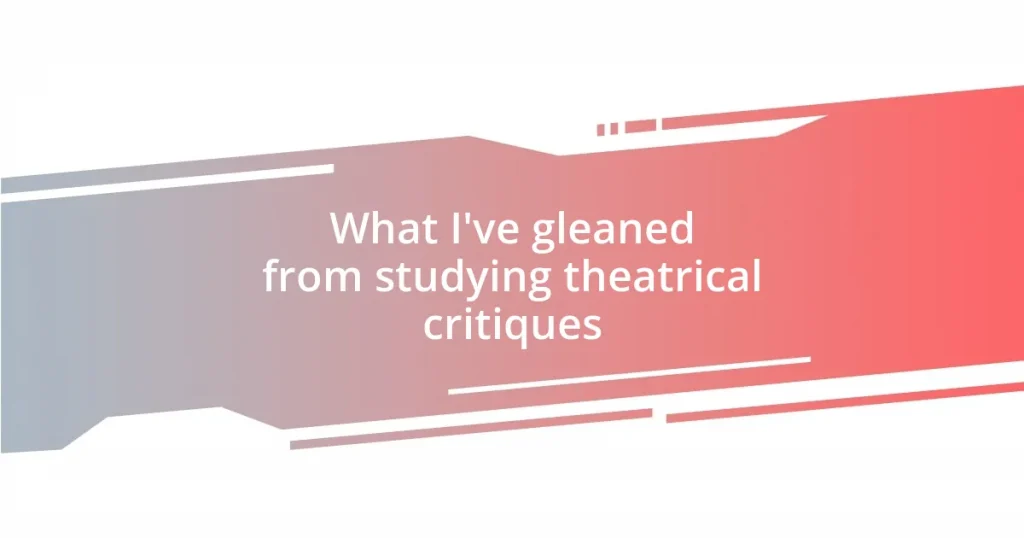Key takeaways:
- Monologues enhance character development, allowing performers to connect deeply with emotional experiences and engage the audience.
- Choosing the right monologue is crucial; it should resonate personally with the performer and fit the context or audience’s expectations.
- Analyzing character objectives and emotions enriches performances and helps the audience relate to the character’s journey.
- Receiving and incorporating feedback can significantly improve performances, leading to deeper emotional connections and a richer overall experience.
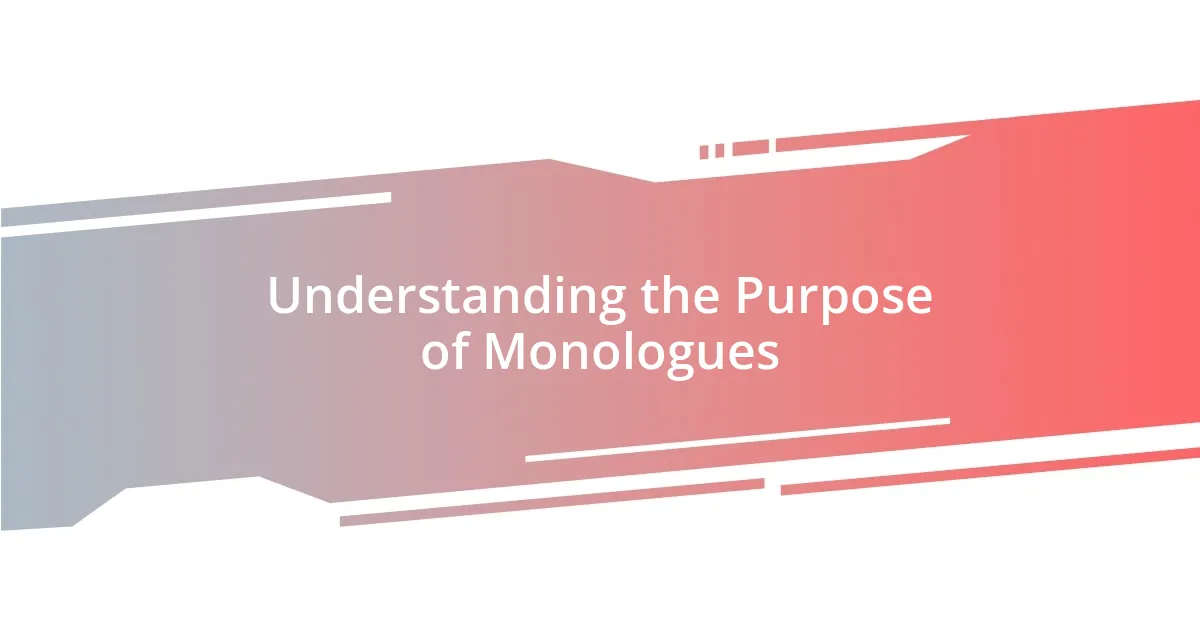
Understanding the Purpose of Monologues
Monologues serve as a powerful tool for character development and emotional expression. In my experience as a performer, I’ve found that delivering a monologue allows me to delve deeply into a character’s psyche, revealing their innermost thoughts and feelings. Have you ever watched a scene where a character’s solo speaks to their struggle? It’s in those moments that we truly connect with the character’s journey.
There’s something intimate about a monologue that invites the audience into a private space, creating a bond that’s hard to replicate. I remember the first time I performed a heartfelt monologue; it felt like I was laying bare my soul on stage, and I could sense the audience holding their breath alongside me. Can you recall a moment where a character’s words resonated with your own experiences? That shared understanding is the magic of monologues.
Moreover, monologues can propel the narrative forward by encapsulating key ideas without distraction. When I watch a play, those moments of reflection often clarify complex themes, helping me engage with the story on a deeper level. Isn’t it fascinating how, through a single voice, layers of context can unfold, enriching the entire experience? This is the essence of why monologues matter—they not only tell a story but invite us to contemplate our own lives in the process.
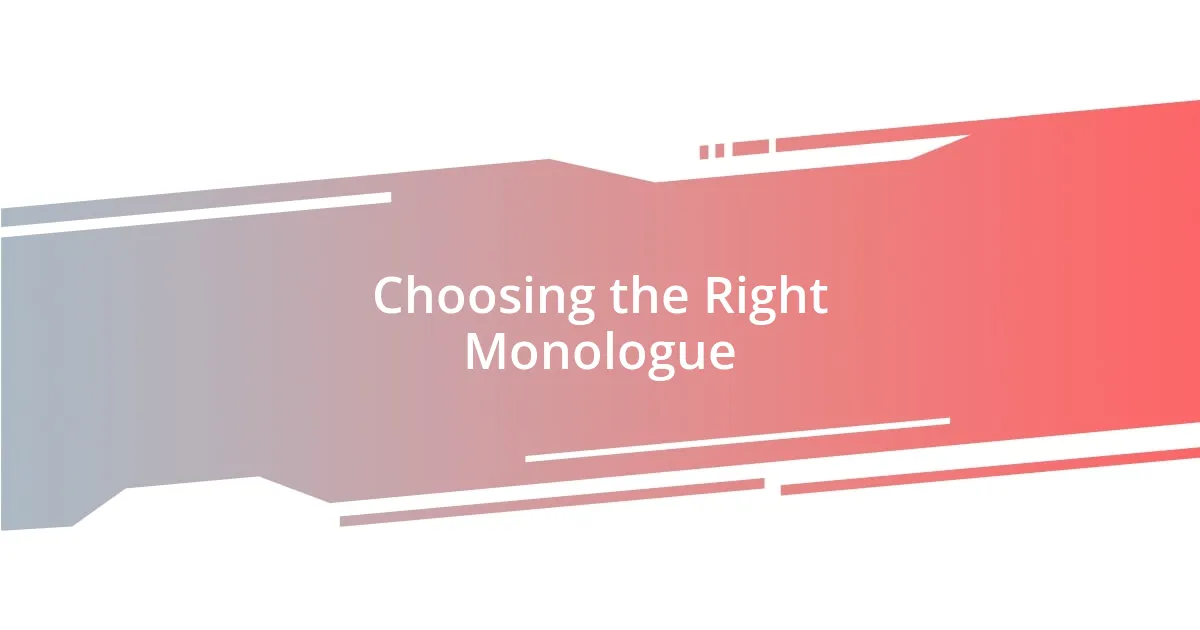
Choosing the Right Monologue
Choosing the right monologue is pivotal for showcasing your skills as a performer. I remember sifting through countless pieces, searching for one that truly resonated with me. It was like dating—each monologue I tried on for size had to evoke an emotional response, not just from me, but from the audience. Have you ever felt that spark when a line just clicks? That’s the kind of connection you should seek.
As I explore various contexts, I consider the character’s journey and emotional depth. For instance, I once gravitated towards a monologue from a classic play because it echoed my own struggles with loss. The authenticity of that piece allowed me to channel my own experiences while still being true to the character. Authenticity, in my view, is non-negotiable when choosing a monologue; it needs to feel like a part of you.
Finally, think about the occasion or the audience. A light-hearted piece may be perfect for a casual setting, while a more intense monologue might resonate better in a dramatic competition. I often weigh the tone of the event against the emotional gravity of my chosen piece. What do you want your audience to feel? That’s the question that guides my selection process.
| Monologue Type | Contextual Use |
|---|---|
| Emotional | Deep connection, personal struggle |
| Comedic | Light-hearted events, humorous contexts |
| Classic | Theatrical performances, competitions |
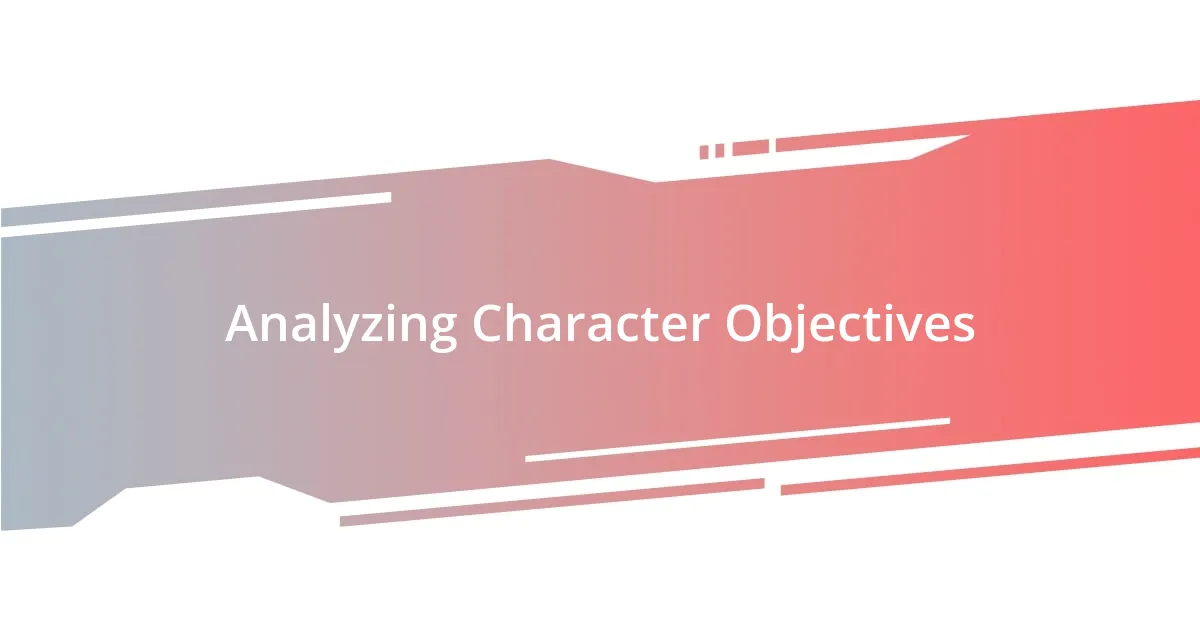
Analyzing Character Objectives
When I analyze character objectives in a monologue, I delve into what drives a character’s words and actions. It’s intriguing to uncover the underlying motives that fuel their emotional expression. For example, during one of my performances, I portrayed a character whose yearning for acceptance was palpable. Every line resonated with the audience, as they sensed my urgency to be embraced, reflecting their own desires for connection. That moment taught me the importance of fully understanding a character’s goals to bring authenticity to the performance.
Here are some key aspects I focus on when analyzing character objectives:
- Desire: What does the character want at this moment?
- Conflict: What obstacles stand in their way?
- Emotion: How does the character feel about their situation?
- Urgency: Is there a specific time constraint or pressure affecting their speech?
- Relationship: How do their interactions with other characters shape their objectives?
Examining these elements not only enriches my interpretation but also enhances the audience’s experience as they connect with the character’s journey.
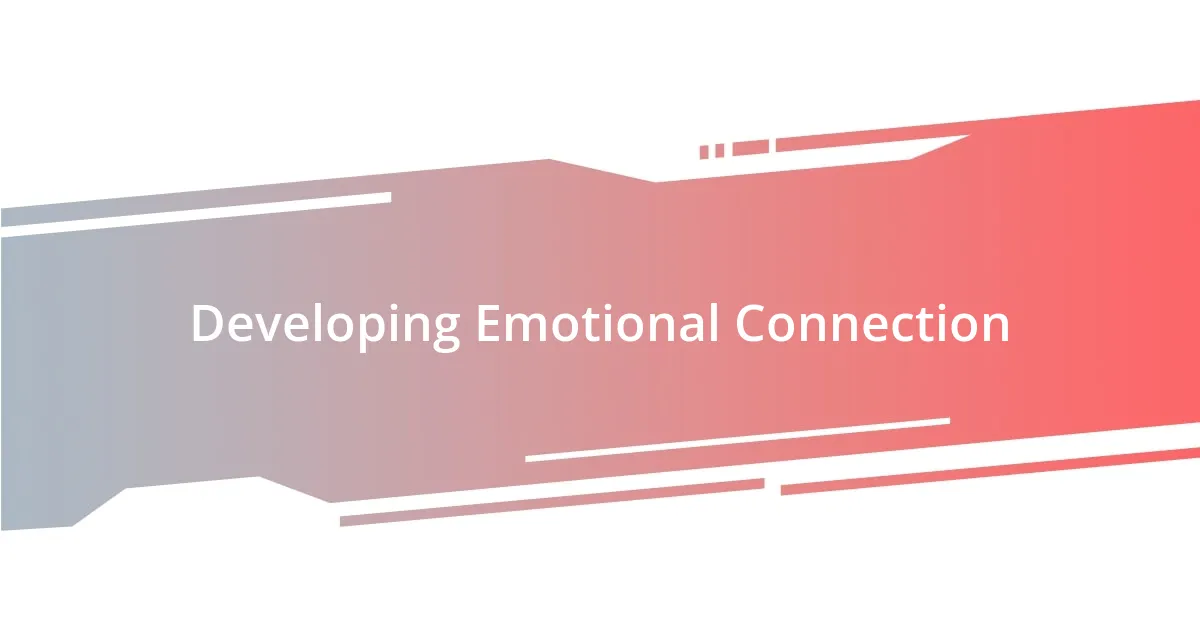
Developing Emotional Connection
Developing an emotional connection in monologues is all about tapping into shared experiences. I once performed a piece where the character grappled with heartbreak. As I delivered the lines, I could feel my own emotions surfacing, and I noticed the collective sighs from the audience. That synergy sparked a realization: we all carry our own stories of loss, which brings us together in such moments of vulnerability. Have you ever watched a performance that struck a chord within you? That’s the power of connection.
In my experience, the magic truly happens when I weave personal truths into the character’s narrative. For instance, I portrayed a character wrestling with guilt, and I drew from my own moments of regret to amplify the emotional weight. This fusion of reality and fiction helped me embody the character authentically. I remember looking into the eyes of the audience and seeing their empathy reflected back at me. It’s moments like these that remind me how deeply we can resonate with one another through performance.
To cultivate that emotional bond, I also focus on the subtleties of delivery. Each pause, inflection, or change in pace can add depth to the performance. Once, during a particularly poignant line, I allowed silence to fill the space—those few seconds felt eternal. I witnessed the audience leaning in, hanging onto my every word. How often do we take a moment to breathe in art? It’s this deliberate pacing that invites others to join us on an emotional journey, making the experience unforgettable for everyone involved.
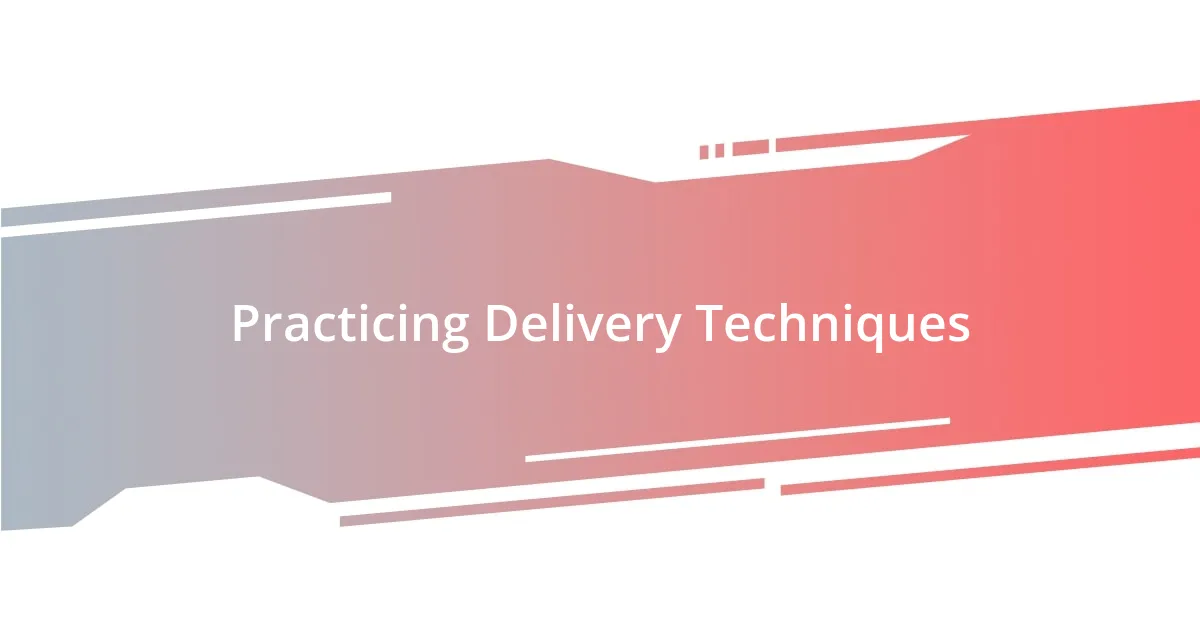
Practicing Delivery Techniques
Practicing delivery techniques is essential in honing my performance skills. I’ve found that the way I convey emotions can dramatically shift the audience’s perceptions. During practice sessions, I often record myself and review the footage. There’s something so revealing about seeing expressions and gestures from an outsider’s perspective. It helps me understand what lands well and what feels flat. Have you ever watched yourself perform? It can be eye-opening.
One technique I frequently revisit is working with voice modulation. I remember rehearsing a scene where my character’s emotions oscillated from anger to pleading. By deliberately altering my pitch and volume, I noticed how those changes heightened the tension in the room. Just a slight raise in volume at a critical moment can draw the audience in, while a softer tone can evoke introspection. It’s as if I’m sculpting the audience’s emotional response, guiding them through a rollercoaster of feelings.
Another invaluable exercise is practicing in front of trusted friends or fellow actors. Their feedback helps reveal blind spots I might otherwise miss. I once performed a portion of a monologue and expected laughter in certain spots. Instead of humor, my friends saw confusion. It made me reassess my delivery and intent. Isn’t it fascinating how a different perspective can reshape performance? Engaging in this collaborative practice not only improves my skills but cultivates a deeper connection with those I perform alongside.
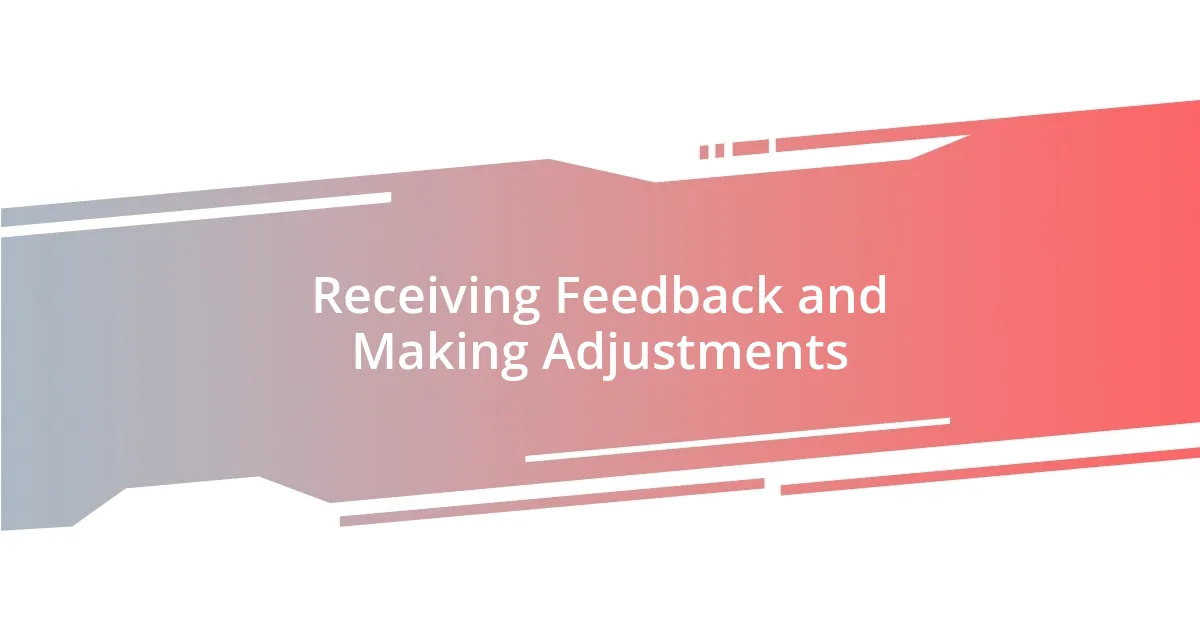
Receiving Feedback and Making Adjustments
Receiving feedback can be a transformative experience, but it also requires an open mind. I remember a time when I performed a monologue that I was excited about, only to receive feedback that my pacing felt rushed. At first, I was defensive. How could that be? But after reflecting, I realized that my eagerness to connect had led me to overlook the nuance of timing. How often do we let our passion cloud our judgment? Embracing that feedback helped me slow down and really immerse the audience in the story.
Adjustments following feedback can be tricky, but I find they often lead to exciting new discoveries. I once had a mentor suggest I change a pivotal line in a monologue. It felt daunting at first; that line was my comfort zone. However, after some experimentation, I found that rephrasing it allowed for a deeper emotional impact. The room filled with a palpable tension when I tried it during practice. Have you ever made a change that completely shifted the tone of your performance? Those moments remind me of the art’s dynamic nature—they can greatly enhance the overall experience.
Iterating on feedback is part of the journey, transforming the initial performance into something richer. When I incorporate suggestions from my peers, I often find myself weaving in unexpected layers that reframe the whole piece. After a workshop, I took inspiration from a colleague’s observation about the vulnerability of my character. I integrated that into my next rehearsal and felt the difference. The audience’s reactions were more engaged and empathetic. It struck me then: feedback isn’t just criticism; it’s a collaborative effort to unearth the essence of the performance. How can we not be grateful for that?
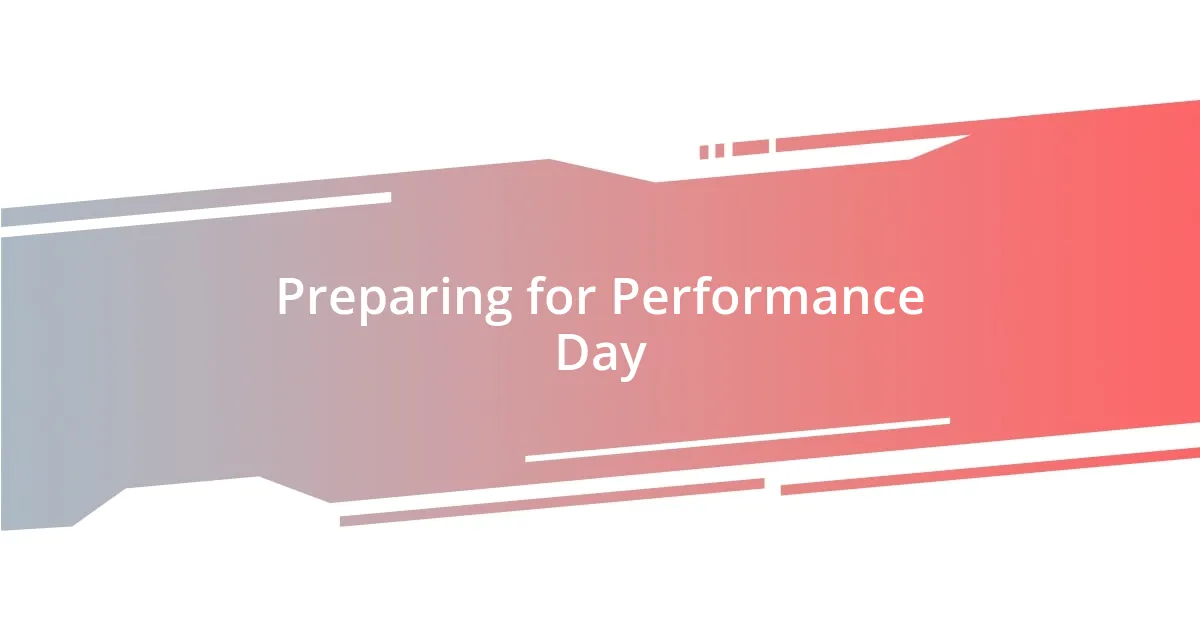
Preparing for Performance Day
Preparing for performance day brings a whirlwind of emotions—excitement, nervousness, and anticipation. I often spend the night before reviewing my monologue, fine-tuning the key emotional beats. There’s something incredibly grounding about immersing myself in the text the night before; it allows me to connect one last time with the character. Have you ever noticed how the final rehearsals can reveal nuances you hadn’t felt before?
On the actual day of the performance, I adopt a routine that helps calm my nerves. I like to start with a light physical warm-up, stretching my body and loosening up. This ritual not only primes me physically but mentally as well. A few deep breaths and some vocal exercises remind me that I’m in control. It’s incredible how such small practices can shift my mindset before stepping onto the stage. What do you do to find your center on those crucial days?
As I approach the venue, I often take a moment to soak in the environment. I’ll walk around, observing the space, envisioning myself within it. I recall a time when I arrived at a theater that felt far more imposing than I anticipated. Instead of retreating into myself, I embraced that feeling, transforming it into energy. It made me more resolute in my performance. That moment reinforced my belief that embracing the atmosphere can enhance our portrayal. How do you connect with the spaces you perform in?




